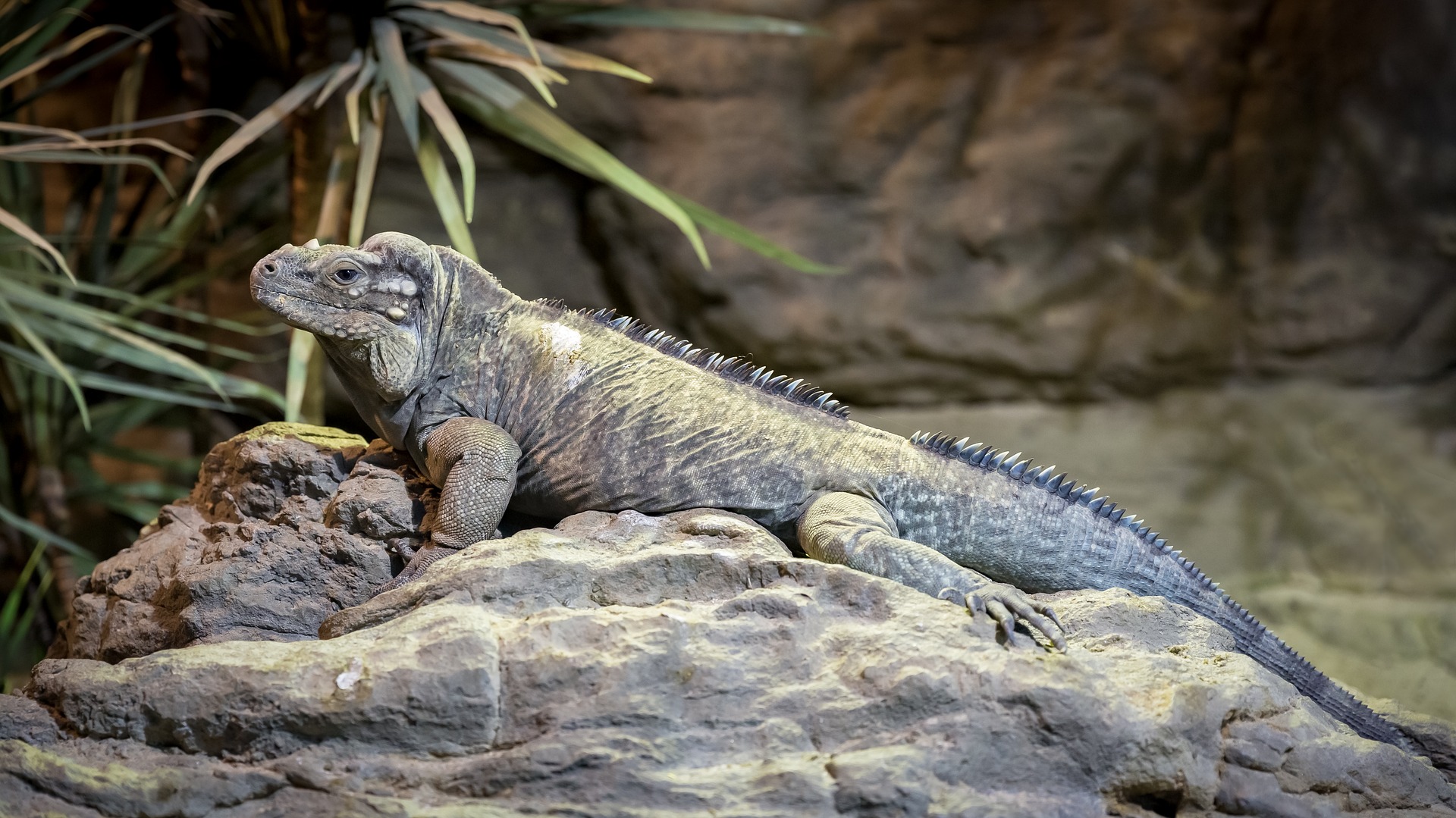

Ranging throughout Hispaniola, Haiti and the Dominican Republic rhinoceros iguana populations are stable only on Isla Beata and the extreme of the Barahona Peninsula inside Parque Nacional Jaragua. There are moderately dense populations in the southeastern region of Haiti and its offshore islands including the saltwater lake of Etang Saumatre. This species, like other species of Cyclura, is sexually dimorphic males are larger than females, and have more prominent dorsal crests and "horns" in addition to large femoral pores on their thighs, which are used to release pheromones. Males possess an adipose pad in the form of a helmet on the occipital region of the head, and a large dewlap. Thomas Wiewandt, who spent an extended period on Mona Island studying Cyclura cornuta stejnegeri, suggested that the horns, along with lateral spines and prominent parietal bulges, function as protective armor against sharp rocks or as defensive tools to facilitate the escape of males from the grasp of one another. These iguanas are characterized by the growth of bony prominent tubercles on their snouts which resemble horns. Most adults weigh 4.56 kilograms (10.1 lb) to 9 kilograms (20 lb) A crest of pointed horned scales extends from the nape of their neck to the tip of their tail. Their colour is a uniform gray to brown drab. The rhinoceros iguana, like other members of the genus Cyclura, is a large-bodied, heavy-headed lizard with strong legs and a vertically flattened tail.

In addition to the nominate race ( Cyclura cornuta cornuta) found on Hispaniola, there are two other subspecies of Cyclura cornuta, the Mona ground iguana ( Cyclura cornuta stejnegeri) and the Navassa Island iguana ( Cyclura cornuta onchiopsis), although the latter subspeciee extinct in the wild. The species was first identified by Pierre Joseph Bonnaterre in 1789.

The rhinoceros iguana's specific name, cornuta, is the feminine form of the Latin adjective cornutus, meaning "horned" and refers to the horned projections on the snouts of males of the species. The generic name ( Cyclura) is derived from the Ancient Greek cyclos (κύκλος) meaning "circular" and ourá (οὐρά) meaning "tail", after the thick-ringed tail characteristic of all Cyclura. The rhinoceros iguana is a species of lizard belonging to the genus Cyclura.


 0 kommentar(er)
0 kommentar(er)
